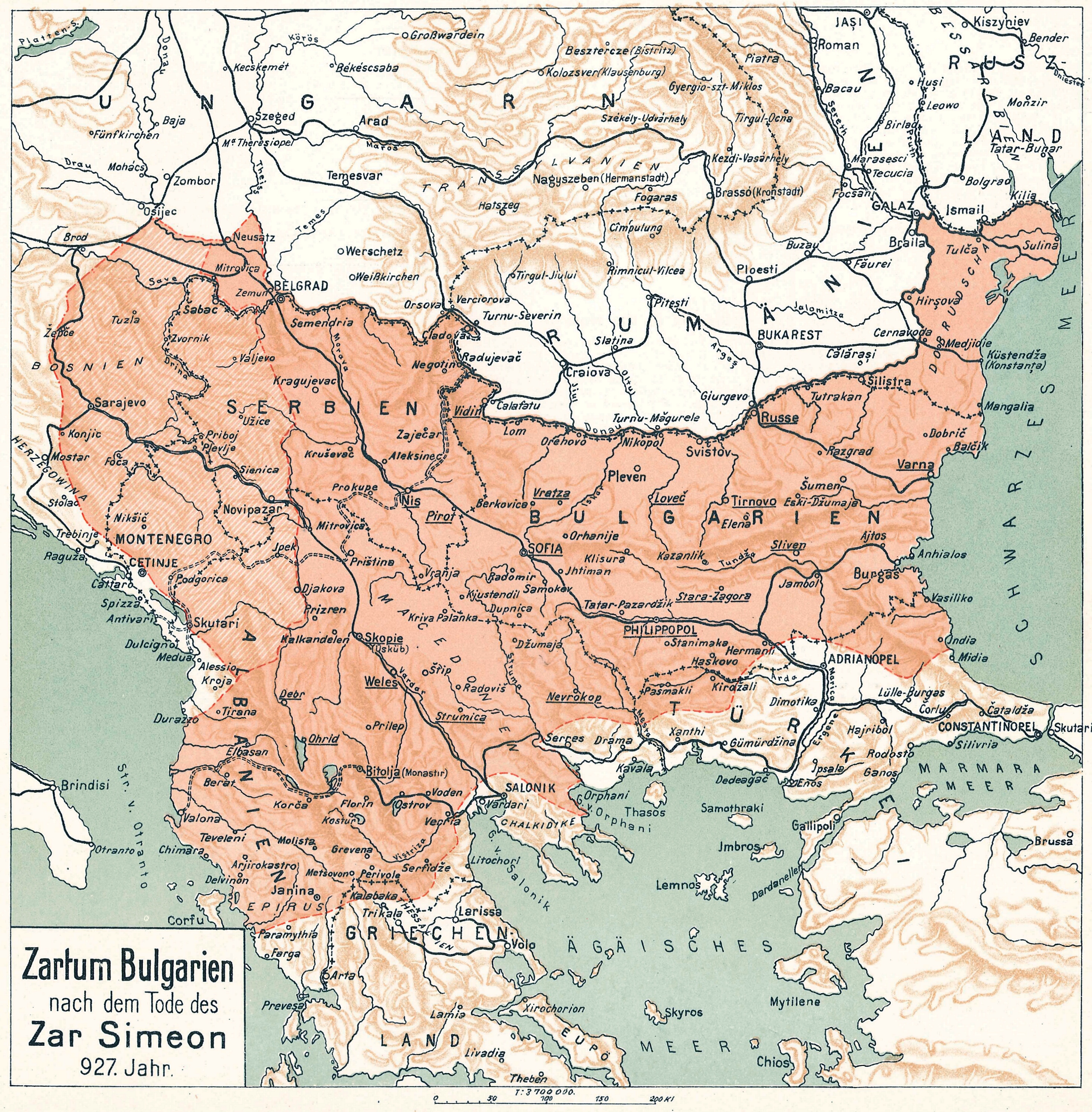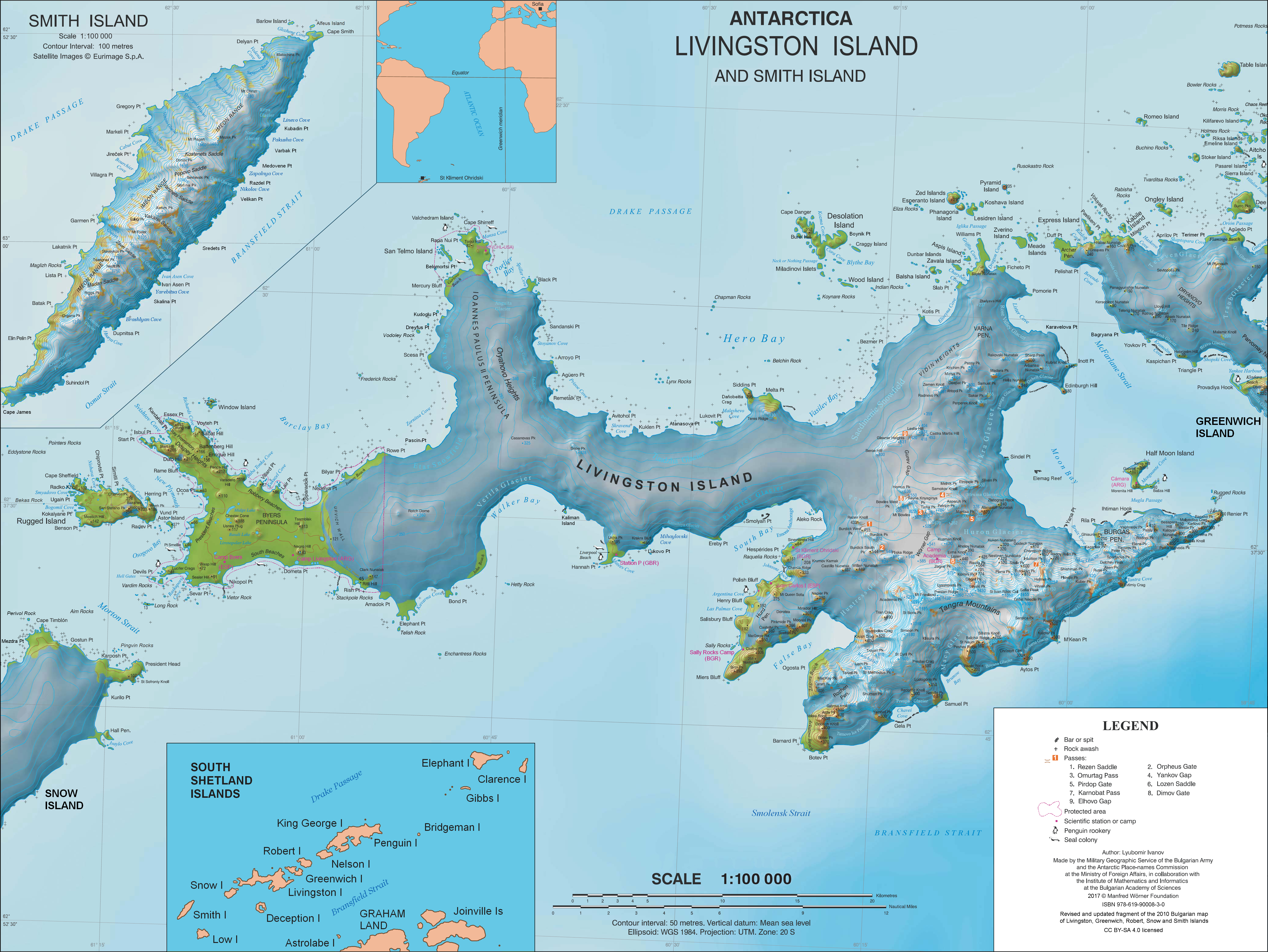|
Mostich Hill
Mostich Hill ( bg, хълм Мостич, ‘Halm Mostich’ \'h&lm 'mos-tich\) is a rocky hill rising to 130 m in the southwestern part of Rugged Island (South Shetland Islands), Rugged Island off the west coast of Byers Peninsula of Livingston Island in the South Shetland Islands, Antarctica. Situated 780 m northeast of Benson Point, 3.16 km south-southeast of Cape Sheffield, and 3.78 km west of Radev Point. The hill is named after Mostich, Ichirgu-boil (chief boyar) of Czar Simeon I of Bulgaria, Simeon the Great and Peter I of Bulgaria (10th Century AD). Location Mostich Hill is located at . Spanish mapping in 1992 and Bulgarian in 2009. Maps Península Byers, Isla Livingston.Mapa topográfico a escala 1:25000. Madrid: Servicio Geográfico del Ejército, 1992. * L.L. IvanovAntarctica: Livingston Island and Greenwich, Robert, Snow and Smith Islands.Scale 1:120000 topographic map. Troyan: Manfred Wörner Foundation, 2009. References Mostich Hill.Scientific Commit ... [...More Info...] [...Related Items...] OR: [Wikipedia] [Google] [Baidu] |
Mostich
Mostich ( bg, Мостич, Old Bulgarian: МОСТИЧЬ) was a high-ranking official in the 10th-century First Bulgarian Empire, during the rule of Simeon I and Peter I. He bore the title of Ichirgu-boil and was most likely the commander of the state capital Preslav's garrison. Mostich is known from the 10th-century Old Bulgarian inscription on his tombstone, found in a church (now known as "Mostich's Church") in the Selishte area of Preslav, then the inner city of the Bulgarian capital. The tombstone was discovered in 1952 by Professor Stancho Vaklinov and is preserved in the National Archaeological Museum. The inscription is Mostich's epitaph, indicating that he was buried in the church: his remains were also found, revealing that he was relatively short (165–170 cm). The text is notable for being one of the earliest sources mentioning the title "Цѣсарь" (" Tsesar"Станислав Станилов, Българската монархия през средни� ... [...More Info...] [...Related Items...] OR: [Wikipedia] [Google] [Baidu] |
Antarctic Place-names Commission
The Antarctic Place-names Commission was established by the Bulgarian Antarctic Institute in 1994, and since 2001 has been a body affiliated with the Ministry of Foreign Affairs of Bulgaria. The Commission approves Bulgarian place names in Antarctica, which are formally given by the President of the Republic according to the Bulgarian Constitution (Art. 98) and the established international practice. Bulgarian names in Antarctica Geographical names in Antarctica reflect the history and practice of Antarctic exploration. The nations involved in Antarctic research give new names to nameless geographical features for the purposes of orientation, logistics, and international scientific cooperation. As of 2021, there are some 20,091 named Antarctic geographical features, including 1,601 features with names given by Bulgaria.Bulgarian Antarctic Gaze ... [...More Info...] [...Related Items...] OR: [Wikipedia] [Google] [Baidu] |
Composite Gazetteer Of Antarctica
The Composite Gazetteer of Antarctica (CGA) of the Scientific Committee on Antarctic Research (SCAR) is the authoritative international gazetteer containing all Antarctic toponyms published in national gazetteers, plus basic information about those names and the relevant geographical features. The Gazetteer includes also parts of the International Hydrographic Organization (IHO) General Bathymetric Chart of the Oceans (GEBCO) gazetteer for under-sea features situated south of 60° south latitude. , the overall content of the CGA amounts to 37,893 geographic names for 19,803 features including some 500 features with two or more entirely different names, contributed by the following sources: {, class="wikitable sortable" ! Country ! Names , - , United States , 13,192 , - , United Kingdom , 5,040 , - , Russia , 4,808 , - , New Zealand , 2,597 , - , Australia , 2,551 , - , Argentina , 2,545 , - , Chile , 1,866 , - , Norway , 1,706 , - , Bulgaria , 1,450 , - ... [...More Info...] [...Related Items...] OR: [Wikipedia] [Google] [Baidu] |
Scientific Committee On Antarctic Research
The Scientific Committee on Antarctic Research (SCAR) is an interdisciplinary body of the International Science Council (ISC). SCAR coordinates international scientific research efforts in Antarctica, including the Southern Ocean. SCAR's scientific work is administered through several discipline-themed ''science groups''. The organisation has observer status at, and provides independent advice to Antarctic Treaty Consultative Meetings, and also provides information to other international bodies such as the Intergovernmental Panel on Climate Change (IPCC) and the United Nations Framework Convention on Climate Change (UNFCCC). History At the International Council of Scientific Unions (ICSU)’s Antarctic meeting held in Stockholm from 9–11 September 1957, it was agreed that a committee should be created to oversee scientific research in Antarctica. At the time there were 12 nations actively conducting Antarctic research and they were each invited to nominate one delegate to ... [...More Info...] [...Related Items...] OR: [Wikipedia] [Google] [Baidu] |
Peter I Of Bulgaria
Peter I ( cu, Петръ А҃; bg, Петър I) (died 30 January 970) was emperor (tsar) of Bulgaria from 27 May 927 to 969. His seal reads ΙΠSVΟς·GRECIA·VΟΔΟ. Early reign Peter I was the son of Simeon I of Bulgaria by his second marriage to the sister of George Sursuvul. Peter had been born early in the 10th century, but it appears that his maternal uncle was very influential at the beginning of his reign. In 913 Peter may have visited the imperial palace at Constantinople together with his older brother Michael. For unspecified reasons, Simeon had forced Michael to become a monk and had named Peter as his successor. To prove himself a worthy successor to his father both at home and in the eyes of foreign governments, Peter began his reign with a military offensive into Byzantine Thrace in 927 which was the last campaign of the Byzantine–Bulgarian war of 913–927. Nevertheless, he followed up his quick successes by secretly negotiating a peace treaty before the ... [...More Info...] [...Related Items...] OR: [Wikipedia] [Google] [Baidu] |
Simeon I Of Bulgaria
Tsar Simeon (also Symeon) I the Great ( cu, цѣсар҄ь Сѷмеѡ́нъ А҃ Вели́къ, cěsarĭ Sỳmeonŭ prĭvŭ Velikŭ bg, цар Симеон I Велики, Simeon I Veliki el, Συμεών Αʹ ὁ Μέγας, Sumeṓn prôtos ho Mégas) ruled over Bulgaria from 893 to 927,Lalkov, ''Rulers of Bulgaria'', pp. 23–25. during the First Bulgarian Empire. Simeon's successful campaigns against the Byzantines, Magyars and Serbs led Bulgaria to its greatest territorial expansion ever, making it the most powerful state in contemporary Eastern and Southeast Europe. His reign was also a period of unmatched cultural prosperity and enlightenment later deemed the Golden Age of Bulgarian culture. During Simeon's rule, Bulgaria spread over a territory between the Aegean, the Adriatic and the Black Sea.Bakalov, ''Istorija na Bǎlgarija'', "Simeon I Veliki". The newly independent Bulgarian Orthodox Church became the first new patriarchate besides the Pentarchy, and Bul ... [...More Info...] [...Related Items...] OR: [Wikipedia] [Google] [Baidu] |
Boyar
A boyar or bolyar was a member of the highest rank of the feudal nobility in many Eastern European states, including Kievan Rus', Bulgaria, Russia, Wallachia and Moldavia, and later Romania, Lithuania and among Baltic Germans. Boyars were second only to the ruling princes (in Bulgaria, tsars) from the 10th century to the 17th century. The rank has lived on as a surname in Russia, Finland, Lithuania and Latvia where it is spelled ''Pajari'' or ''Bajārs/-e''. Etymology Also known as bolyar; variants in other languages include bg, боляр or ; rus, боя́рин, r=boyarin, p=bɐˈjærʲɪn; ; ro, boier, ; and el, βογιάρος. The title Boila is predecessor or old form of the title Bolyar (the Bulgarian word for Boyar). Boila was a title worn by some of the Bulgar aristocrats (mostly of regional governors and noble warriors) in the First Bulgarian Empire (681–1018). The plural form of boila ("noble"), ''bolyare'' is attested in Bulgar inscriptions [...More Info...] [...Related Items...] OR: [Wikipedia] [Google] [Baidu] |
Ichirgu-boil
The Ichirgu-boila or Chargobilya ( el, ητζιργου βοιλα; Old Bulgarian: , bg, Ичиргу боила) was a high-ranking official in the First Bulgarian Empire. He was the commander of the garrison of the capital and was the third most important person in the state after the ruler and the Kavkhan. In peace-time the ichirgu-boila had diplomatic functions. According to some data the ichirgu-boila personally commanded a squad of 400 heavy cavalrymen. Origin According to Veselin Besheliev the word "ichirgu" was of Turkic- Altay origin and meant "internal".Бешевлиев В.''Прабългарски епиграфски паметници'' Издателство на Отечествения фронт, София, 1981 One funeral inscription found during excavation works in Preslav talks about the ichirgu-boila Mostich who served under the Emperors Simeon I the Great (893-927) and Peter I (927-969). An unknown ichirgu-boila is mentioned in the Philippi Inscript ... [...More Info...] [...Related Items...] OR: [Wikipedia] [Google] [Baidu] |
Radev Point
Radev Point ( bg, Радев нос, ‘Radev Nos’ \'ra-dev 'nos\) is a point in the southeast extremity of Rugged Island off the west coast of Byers Peninsula of Livingston Island in the South Shetland Islands, Antarctica. Kianida Reef lies 440 m southwest of the point. The feature is situated 4.5 km east of Benson Point, 1.05 km southwest of Vund Point, and 2.62 km west by south of Laager Point, Livingston Island. The point is named after the prominent Bulgarian historiographer, writer and diplomat Simeon Radev (1879 – 1967).Bulgarian Antarctic Gazetteer.Antarctic Place-names Commission. (details in Bulgarianbasic datain English) Location Radev Point is located at . British mapping in 1968, Spanish in 1992 and Bulgarian in 2005 and 2009. Maps Península Byers, Isla Livingston.Mapa topográfico a escala 1:25000. Madrid: Servicio Geográfico del Ejército, 1992. * L.L. IvanovAntarctica: Livingston Island and Greenwich, Robert, Snow and Smith Islands.Sc ... [...More Info...] [...Related Items...] OR: [Wikipedia] [Google] [Baidu] |
Cape Sheffield
Cape Sheffield is a cape forming the northwest extremity of Rugged Island in the South Shetland Islands, Antarctica. It was named for Captain James P. Sheffield, Master of the brig ''Hersilia'' of Stonington, Connecticut, in 1819–20 and 1820–21, the first American sealer known to have visited the South Shetland Islands. In 1819–20 he took 8,868 sealskins from headquarters at Rugged Island. Location The point is located at which is 6 km west-northwest of Vund Point, 3.2 km north by west of Benson Point Benson Point is the ice-free headland forming the southwest extremity of Rugged Island in the South Shetland Islands, Antarctica. It is a northwest entrance point for Morton Strait. The area was known to early 19th century sealers. The feature ... and 5.15 km southwest of Start Point, Livingston Island. (British mapping in 1968, detailed Spanish mapping in 1992, and Bulgarian mapping in 2005 and 2009). Maps Península Byers, Isla Livingston.Mapa to ... [...More Info...] [...Related Items...] OR: [Wikipedia] [Google] [Baidu] |





_-_contrast.jpg)

